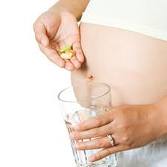
Since we talk so much about the importance of fish oil for women's health, we get forwarded articles and studies from colleagues who'd like to know what we think.
Late last night, Minh-Hai Tran forwarded me an article entitled,"Healthy and Pregnant: Forget the Fish Oil".
The hairs on the back of my neck immediately prickled on seeing this title…knowing the potential for confusion this could cause with readers like ours, who've heard us talk so much about an opposing viewpoint.
Here's a closer look at what the article says and how it fits into our treatment model.
I've always followed the guidelines established by the International Society for the Study of Fatty Acids and Lipids (ISSFAL) when evaluating studies and formulating recommendations. Here are their recommendations, right off of their website. I comment on the current study's accommodation of these recommendations in italics below each item.
1. Dietary fat intake during pregnancy and lactation, as a proportion of energy intake, should be the same as that recommended for the general population.
I was not able to find if there was any standardization of diet during this study. This is a common error in study design when evaluating the effectiveness of a supplement. Any added chemical in any study is going to respond differently, depending on the biochemistry of the environment into which it is introduced.
The pre-pregnancy weights of the women in the study were not mentioned, either. I would imagine that this would potentially affect the outcome of the study.
2. The n-3 LC-PUFA, DHA, must be deposited in adequate amounts in brain and other tissues during fetal and early postnatal life. Several studies have shown an association between maternal dietary intake of oily fish or oils providing n-3 LC-PUFA during pregnancy and/or lactation and visual and cognitive development as well as other functional outcomes of the infants.Pregnant and lactating women should aim to achieve a dietary intake of n-3 LC-PUFA that supplies a DHA intake of at least 200 mg/d. Intakes of up to 1 g/d DHA or 2·7 g/d n-3 LC-PUFA have been used in randomized trials without occurrence of significant adverse effects.
It appears from the comment of the lead researcher that a dose of 200 mg DHA per day is what was used in the study. Our experience at inCYST is that it can take significantly more DHA than that to see benefit. This is especially true if the diet in which the supplement is included is high in omega-6 fatty acids, which interfere with omega-3 activity. The study size is large--around 2,400 women, which would have given these researchers an opportunity to collect dietary intake data and evaluate if there were different results in women whose diets were high in omega-6 fatty acids vs. those which were higher in omega-9 fatty acids. Huge opportunity lost, and important advice for anyone currently putting together any kind of study regarding omega-3 fatty acids. The entire diet, not just the dosed supplement, is important to standardize and measure.
I would have been interested to see various levels of DHA--200, 500, 750, 1000 mg, to see if the same results resulted. Using the lowest dose possible is going to be the treatment least likely to produce positive results.
3. Women of childbearing age can meet the recommended intake of DHA by consuming one to two portions of sea fish per week, including oily fish, which is a good source of n-3 LC-PUFA. This intake of oily fish rarely exceeds the tolerable intake of environmental contaminants. Dietary fish should be selected from a wide range of species without undue preference for large predatory fish, which are more likely to be contaminated with methylmercury.
I agree, that there may be more to this issue than DHA. For example, much information is coming out about the importance of adequate vitamin D for reproductive health. Is it the fish oil or the vitamin D in the salmon…or the interaction between the two that is important? Future studies need to separate out and explore these questions…in the presence of a controlled diet.
Intake of the precursor, a-linolenic acid, is far less effective with regard to DHA deposition in fetal brain than the intake of preformed DHA.
5. There is no evidence that women of childbearing age whose dietary intake of linoleic acid is adequate need an additional dietary intake of arachidonic acid.
This was not a concern with this study.
6. Some studies have shown that maternal intake of fish, fish oils or n-3 LC-PUFA results in a slightly longer duration of gestation, a somewhat higher birth weight and a reduced risk of early preterm delivery. The clinical importance of such effects with regard to infant health has not been fully elucidated.
This finding was confirmed in the new study. I look forward to future studies understanding why.
7. Screening for dietary inadequacies should be performed during pregnancy, preferably during the first trimester. If less than desirable dietary habits are detected, individual counselling should be offered during pregnancy as well as during lactation.
It does not appear that individual omega-3 fatty acid status was evaluated in the women in the new study. So if the women were deficient, a low DHA dosage likely would not have been enough to elucidate a treatment response. If the women had adequate DHA in their tissues before coming pregnant they likely would not have experienced a treatment response.
All due respect to the well-intended researchers, some important aspects of study design were not incorporated, limiting the conclusions that can be drawn from this study. I hope they include a dietitian in future studies.
All due respect to MSNBC, please consider the damage and suffering you potentially inflict on women who could drastically benefit from a simple dietary intervention, on behalf of titling an article purely with SEO (search engine optimization) in mind. Post partum depression is a serious disorder, hurting many others in addition to the woman whose biochemistry produces it.